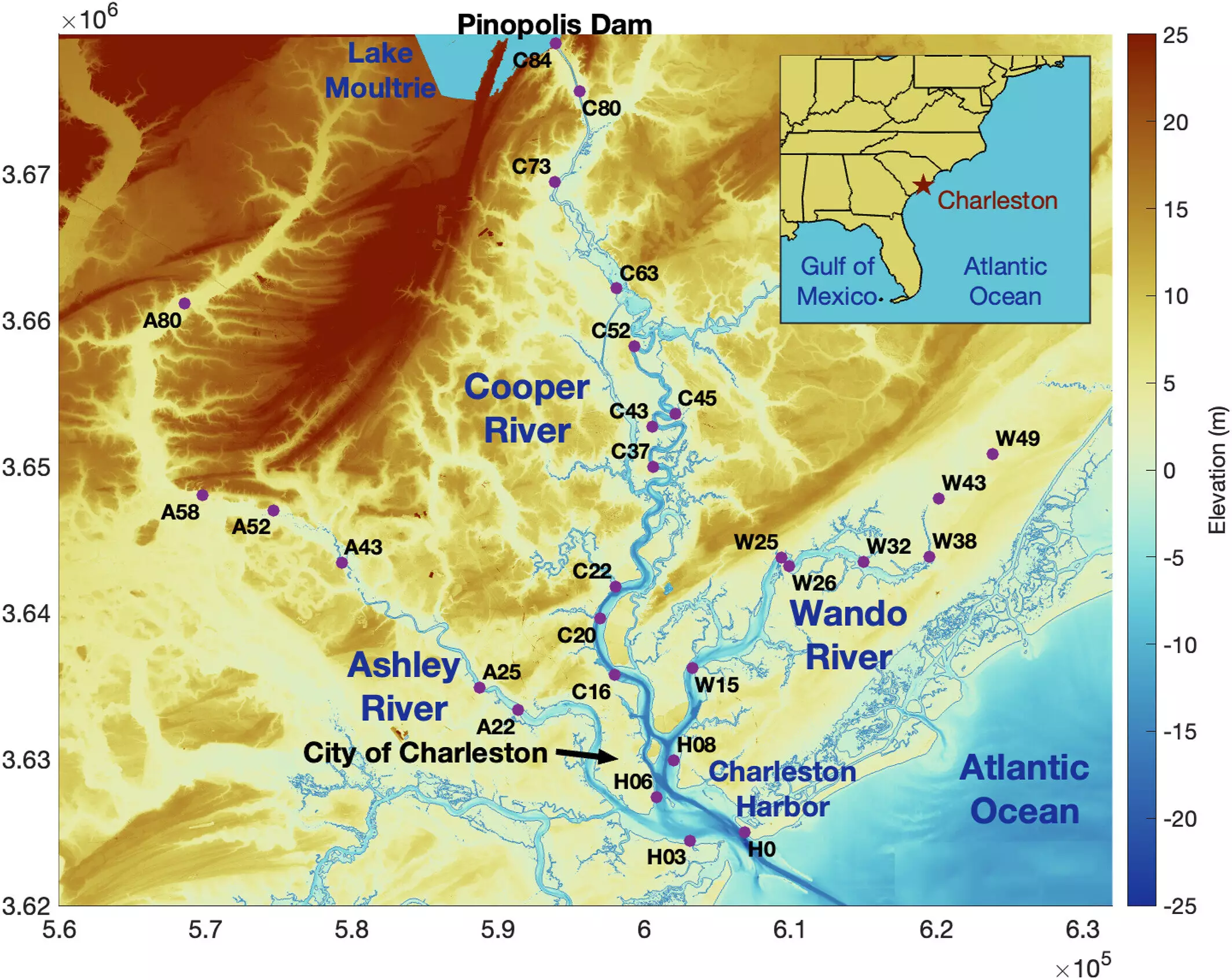Coastal communities often grapple with the looming threat of flooding, especially in the wake of climate change and its resultant impacts—intensifying storms, higher sea levels, and saltwater intrusion. In their quest for safety, many turn to the construction of dams as a preventative measure. However, a recent study published in the Journal of Geophysical Research: Oceans raises a critical alarm: these very structures designed to shield against inundation may inadvertently exacerbate the flood risks they aim to mitigate.
A Complex Interplay: Estuaries and Hydrodynamics
The study, spearheaded by Steven Dykstra at the University of Alaska Fairbanks, examines the intricate relationship between dams and coastal hydrodynamics, particularly in estuarine environments where riverine and oceanic forces collide. Through an analysis of over a century’s worth of data from Charleston Harbor, South Carolina, the researchers illustrate how human-made barriers can dramatically influence flood dynamics. Traditionally, it’s assumed that storm surges weaken as they travel inland; however, Dykstra’s findings suggest a more nuanced reality—one where estuarine shape plays a critical role in flood intensity.
Dykstra employs a compelling metaphor by equating storm-driven waves to splashes in a bathtub, emphasizing that their amplitude and duration can dictate whether water levels rise or fall. Within an estuary, the narrowing, funnel-like structure can enhance these waves, leading to more severe flooding rather than providing relief. This means that while some areas may seem shielded by dams, they could very well be set up for disaster.
The research team’s findings extend beyond the isolated case of Charleston Harbor. By incorporating computer modeling, they examined 23 additional estuaries, spanning diverse geographic regions and including both dammed and natural systems like Alaska’s Cook Inlet. This expansive approach underscores a vital conclusion: the configuration of a basin and the modifications brought by dams fundamentally dictate how water is transported, with serious implications for flood susceptibility both near and far from the coast.
Interestingly, even areas situated miles inland from coastal dams may find themselves vulnerable to the effects of these structures. In Charleston, for instance, significant storm surges were recorded over 50 miles inland—a reality that highlights the far-reaching consequences of coastal alterations. This is particularly concerning given that many residents in these regions may underestimate their exposure to coastal phenomena, especially as sea levels rise.
These revelations prompt an urgent necessity to rethink current strategies surrounding coastal resilience. The inclination to resort to dam construction as a protective measure against flooding must be approached with caution—and a more nuanced understanding of hydrological science. Just as the construction of a dam can redirect and intensify flood waters, it can also alter ecosystems and the natural flow of rivers, leading to a cascade of unforeseen environmental impacts.
Moreover, communities must be educated about their vulnerabilities. As Dykstra pointedly notes, many people may not recognize that they reside in zones influenced by coastal dynamics, especially as extreme weather events grow more unpredictable. Ignorance of these facts is dangerous, as it can lead to inadequate preparations for flood events that could devastate lives and property.
The study initiated by Dykstra and his colleagues serves as a wake-up call for policymakers, researchers, and coastal planners alike. It emphasizes the importance of incorporating hydrodynamic modeling and historical data into the decision-making process regarding flood mitigation infrastructure. As climate change continues to pose threats to coastal ecosystems and communities, a comprehensive understanding of both natural processes and human interventions is crucial in shaping effective disaster response strategies.
Ultimately, the findings advocate for a paradigm shift—from relying solely on dams for flood risk mitigation to adopting a more holistic approach that recognizes the complexity of estuarine environments. It is imperative that we learn from this research, as the future of countless coastal communities may depend on our ability to balance safety with ecological integrity.


Leave a Reply